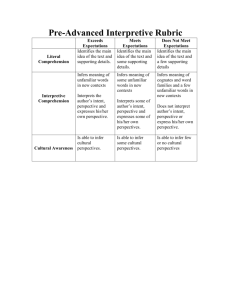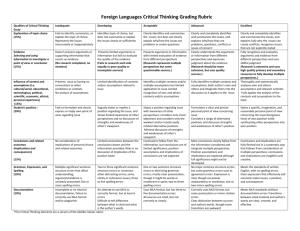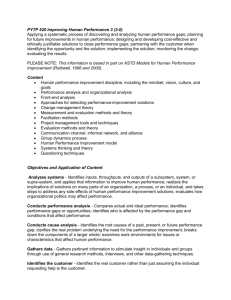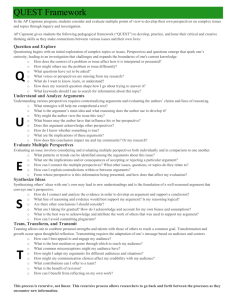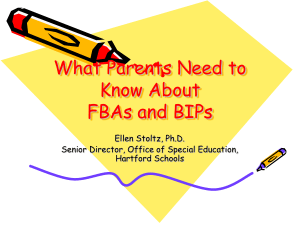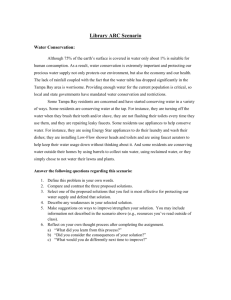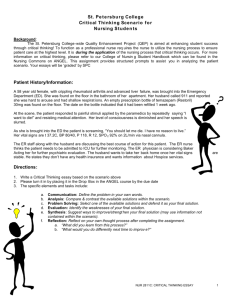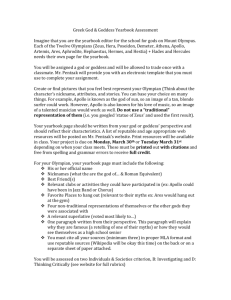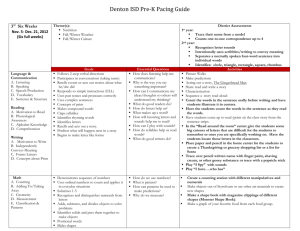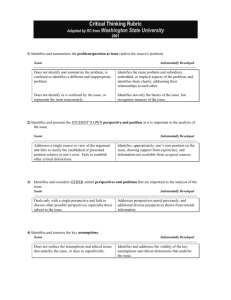Critical Thinking
advertisement
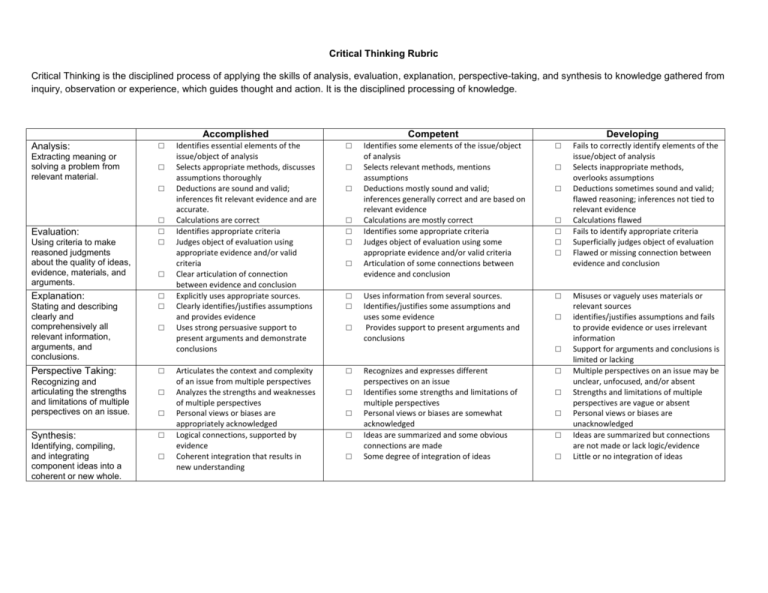
Critical Thinking Rubric Critical Thinking is the disciplined process of applying the skills of analysis, evaluation, explanation, perspective-taking, and synthesis to knowledge gathered from inquiry, observation or experience, which guides thought and action. It is the disciplined processing of knowledge. Accomplished Analysis: □ Extracting meaning or solving a problem from relevant material. □ □ Evaluation: Using criteria to make reasoned judgments about the quality of ideas, evidence, materials, and arguments. Explanation: Stating and describing clearly and comprehensively all relevant information, arguments, and conclusions. Perspective Taking: Recognizing and articulating the strengths and limitations of multiple perspectives on an issue. Synthesis: Identifying, compiling, and integrating component ideas into a coherent or new whole. □ □ □ □ □ □ □ □ □ □ □ □ Competent Identifies essential elements of the issue/object of analysis Selects appropriate methods, discusses assumptions thoroughly Deductions are sound and valid; inferences fit relevant evidence and are accurate. Calculations are correct Identifies appropriate criteria Judges object of evaluation using appropriate evidence and/or valid criteria Clear articulation of connection between evidence and conclusion Explicitly uses appropriate sources. Clearly identifies/justifies assumptions and provides evidence Uses strong persuasive support to present arguments and demonstrate conclusions □ Articulates the context and complexity of an issue from multiple perspectives Analyzes the strengths and weaknesses of multiple perspectives Personal views or biases are appropriately acknowledged Logical connections, supported by evidence Coherent integration that results in new understanding □ □ □ □ □ □ □ □ □ □ Developing Identifies some elements of the issue/object of analysis Selects relevant methods, mentions assumptions Deductions mostly sound and valid; inferences generally correct and are based on relevant evidence Calculations are mostly correct Identifies some appropriate criteria Judges object of evaluation using some appropriate evidence and/or valid criteria Articulation of some connections between evidence and conclusion □ Uses information from several sources. Identifies/justifies some assumptions and uses some evidence Provides support to present arguments and conclusions □ □ □ □ □ □ □ □ □ □ □ □ □ Recognizes and expresses different perspectives on an issue Identifies some strengths and limitations of multiple perspectives Personal views or biases are somewhat acknowledged Ideas are summarized and some obvious connections are made Some degree of integration of ideas □ □ □ □ □ Fails to correctly identify elements of the issue/object of analysis Selects inappropriate methods, overlooks assumptions Deductions sometimes sound and valid; flawed reasoning; inferences not tied to relevant evidence Calculations flawed Fails to identify appropriate criteria Superficially judges object of evaluation Flawed or missing connection between evidence and conclusion Misuses or vaguely uses materials or relevant sources identifies/justifies assumptions and fails to provide evidence or uses irrelevant information Support for arguments and conclusions is limited or lacking Multiple perspectives on an issue may be unclear, unfocused, and/or absent Strengths and limitations of multiple perspectives are vague or absent Personal views or biases are unacknowledged Ideas are summarized but connections are not made or lack logic/evidence Little or no integration of ideas
